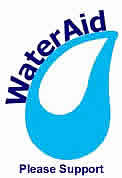Health & Safety And The Drainage Game
The following is a brief guide to some of the dangers faced on a daily basis by sewer and drainage engineers amongst many others, it is not intended to be a definitive guide and should not be treated as such. Every conceivable working area has potential risks and a site specific risk assessment should be undertaken by a qualified person prior to any works being undertaken.
You don`t have to be Einstein to figure out that drains and sewers are unpleasant places to be around at the best of times, there are however some serious Health and Safety issues to be taken into account by anyone who has a mind to dabble in the industry or any DIYer who is attempting some basic repairs on their own home system.
Biological Agents
Working on drain and sewer systems will at some stage bring you into contact with stagnant and waste water that harbor such delights as viruses, bacteria, fungi, parasites and numerous other micro-organisms, if you manage to dodge that lot there is always the risk of coming across a discarded needle or syringe. The aforementioned can lead to any of the following;
Leptospirosis (Weils Disease)
 Rats urine or infected water coming into contact with breaks in the skin can lead to this potentially fatal bacterium, the flu like symptoms, fever, headaches and vomiting can lead to meningitis and kidney failure. Rats urine or infected water coming into contact with breaks in the skin can lead to this potentially fatal bacterium, the flu like symptoms, fever, headaches and vomiting can lead to meningitis and kidney failure.
Slightly of topic but you may want to consider this the next time a barman or landlord asks you if you want a glass with your bottle of strong lager, who knows what has been scurrying over that crate of lagers in warehouses and cellars.
Hepatitis A,B,C
Bodily fluids that may be contaminated with blood coming into contact with broken skin can lead to the above conditions as can splashes to the eyes, nose and mouth and hand to mouth contact.
Tetanus (Lock Jaw)
Again spores that come into contact with broken skin can lead to uncontrolled muscle spasms or lock jaw
Toxicara Canus
This parasite is a roundworm that in its worst cases can lead to blindness
All the above makes for grim reading but thankfully we don`t hear of too many cases being directly linked to sewer and drainage engineers, but it does happen. It is therefore necessary to wear the correct clothing and PPE (Personnel Protective Equipment) such as gloves, overalls and masks when working on these systems. Personnel hygiene is vital to avoid hand to mouth contamination with plenty of hand washing with any cuts and grazes being covered at all times, protective barrier creams are also available.
Working In Confined Spaces

There are still numerous deaths each year due to works being undertaken in confined spaces and unfortunately some of these are connected to works being carried out on sewer, drain and tanks systems. Many of the reported deaths over the years have been multiple because one work colleague has entered the confined space to rescue another.
Defining a confined space is not as clear cut as you would imagine whilst manholes and septic tanks are obviously dangerous confined spaces the definition includes areas and spaces that are substantially but not entirely closed off such as trenches, where there is a foreseeable risk from incidents such as fire, explosion, exphyxiation and drowning amongst others.
Areas such as cellars or basements can be safe areas until a risk is introduced to the area such as the opening of an air-tight manhole cover allowing the sewer system to vent openly into the confined area. So where possible you should avoid working in a confined space but obviously this is not always possible so a risk assessment should be undertaken to ascertain exactly what the dangers are, and only fully trained personnel with a safe systems of works should enter the space using suitable monitoring and escape equipment.
Excavations
As already mentioned above a trench or excavation is a confined space which poses several risks such as venting sewer gases, drowning and asphyxiation, however the risks are not solely to the operatives in the immediate area and great care and thought should go into the most basic of excavations.
 Before a shovel or pick hits the ground in anger some basic checks should be made, if you are excavating within the footpath or road service drawings have to be obtained in accordance with NRSWA showing the position of gas, water, electric and other utility apparatus. Before a shovel or pick hits the ground in anger some basic checks should be made, if you are excavating within the footpath or road service drawings have to be obtained in accordance with NRSWA showing the position of gas, water, electric and other utility apparatus.
If the works are in an industrial setting then likewise attempts should be made to obtain any information possible with regard to below ground cables and pipes and if you are excavating in a domestic setting you should check where services enter the property and where stop taps or junction boxes exist in the footpath.
We now have a folder full of drawings from utility companies with a big disclaimer on them stating that they only indicate the position of a service, you should therefore use cable and utility locating equipment to confirm the position of any below ground services.
Before a concrete paving slab is lifted or the turf is rolled back the working area should be isolated using a barrier system of some description, cones and signs work to some degree but small children, dogs, drunks, pensioners on mobility scooters and people reading newspapers whilst they are walking (i have seen it done) can slip through the net and involuntary find themselves face down in a confined space.
As much as this hurts me to say the safest form of excavation until you are below utility services level is by hand (though there may well be a vacuum excavation company or two who would disagree) this is not to say that this is not without risk, as thrashing about with a pick or chopping at tree roots is a risky business if there are gas, water or electric services immediately adjacent to the offending obstruction. Concrete breakers and drills of any description should not be used below ground level.
Excavations in excess of 1200mm or less in unstable ground should be made safe by some form of shuttering, all excavated spoil should be stored away from the trench and not directly on the edge and consideration should be given to adjacent building foundations. As always the works should be undertaken by trained staff who have a safe working procedure in place.
Lifting Manhole Covers
We have already touched on the confined space issues associated with manholes and chambers, the act of lifting a manhole cover can in itself be a risky business leading to back injury, missing fingers and damaged eyes.
Where possible you should of course use adequate manhole keys but many of the older covers do not facilitate lifting keys and other methods have to be adopted, this can lead to a risk of trapped fingers and toes. Old covers and frames rust and fuse together and require some persuasion with a large hammer, again PPE such as goggles, gloves and boots should be worn to prevent injury.
Once the cover has been lifted the area should be isolated using a suitable barrier system and signs, if the cover is hinged a wedge or break should be installed to prevent accidental closing and when the cover is replaced ensure it is seated properly and does not present a trip hazard.
Safe Jetting & Inspection Techniques
Again we have covered the Confined Space issue but there are further risks to operators and the public alike, as mentioned above open chambers and manholes present a risk to anyone in the vicinity so isolate the working area.
Jetting hoses and camera cables are a trip hazard and steps should be taken to ensure cables are laid flat and clearly highlighted using cones.
Water from jetting operations can also present a slipping hazard on certain types of hard standings and floors so excess liquids should be mopped up, when working in an industrial setting enquire as to what substances or chemicals may be entering the drainage system prior to jetting or surveying lines.
High pressure water jetting units can cause injury to both operators and by-passers due to the pressure of the water jets and the silt & debris propelled from the system during the works, only trained personnel should be using these machines.
|

 Rats urine or infected water coming into contact with breaks in the skin can lead to this potentially fatal bacterium, the flu like symptoms, fever, headaches and vomiting can lead to meningitis and kidney failure.
Rats urine or infected water coming into contact with breaks in the skin can lead to this potentially fatal bacterium, the flu like symptoms, fever, headaches and vomiting can lead to meningitis and kidney failure. 
 Before a shovel or pick hits the ground in anger some basic checks should be made, if you are excavating within the footpath or road service drawings have to be obtained in accordance with NRSWA showing the position of gas, water, electric and other utility apparatus.
Before a shovel or pick hits the ground in anger some basic checks should be made, if you are excavating within the footpath or road service drawings have to be obtained in accordance with NRSWA showing the position of gas, water, electric and other utility apparatus.
